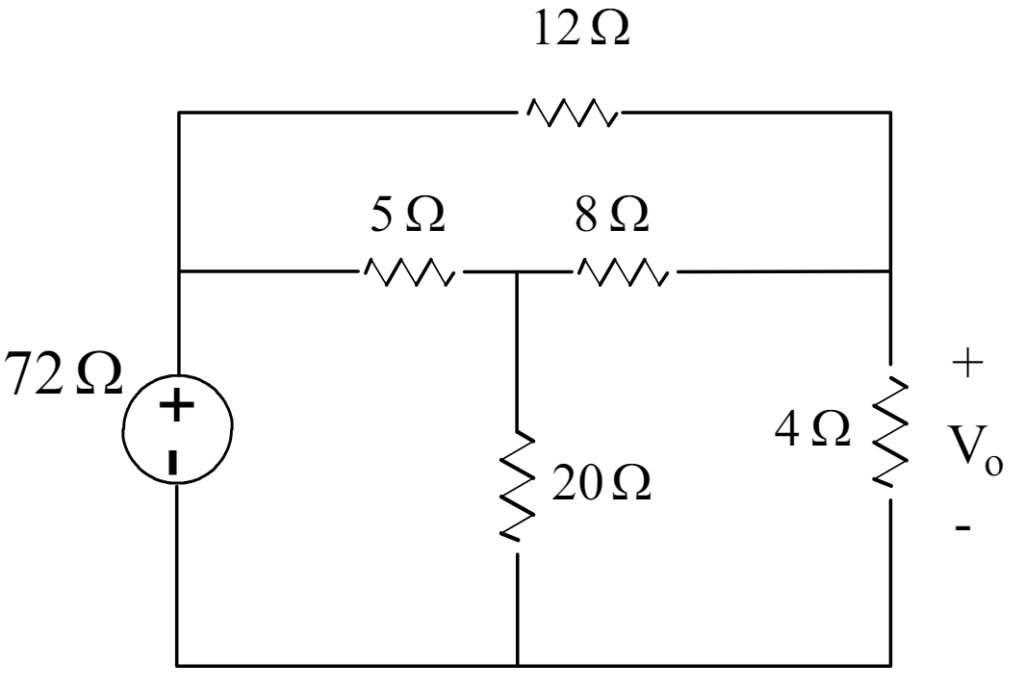Norton’s Theorem states that any portion of a linear electrical circuit with independent and/or dependent sources and resistances can be replaced by an equivalent circuit consisting of a current source Isc in parallel with a resistor Rth. Here, Isc is the short circuit current at the terminals, and Rth is the Thevenin equivalent resistance.

Steps for Applying Norton’s Theorem.
1. Circuit Containing Only Independent Sources:
a. Find the Short Circuit Current Isc .
- Short the terminals of interest.
- Calculate the current through the shorted terminals.
b. Find Thevenin Equivalent Resistance Rth.
- Deactivate all independent sources (replace voltage sources with short circuits and current sources with open circuits).
- Calculate the resistance seen from the terminals.
c. Construct Norton’s Equivalent Circuit.
- Place Isc in parallel with Rth.
- Reconnect the load resistor to this equivalent circuit.
2. Circuit Containing Only Dependent Sources:
a. Find the Short Circuit Current Isc:
- Short the terminals of interest.
- Calculate the current through the shorted terminals, considering the dependency relations.
b. Find Thevenin Equivalent Resistance Rth.
- Apply an external voltage source at the terminals and calculate the resulting current, or apply an external current source and measure the voltage.
- Rth is the ratio of the applied voltage to the resulting current (or vice versa).
c. Construct Norton’s Equivalent Circuit:
- Place Isc in parallel with Rth.
- Reconnect the load resistor to this equivalent circuit.
3. Circuit Containing Both Independent and Dependent Sources:
a. Find the Short Circuit Current Isc:
- Short the terminals of interest.
- Calculate the current through the shorted terminals, considering both independent and dependent sources.
b. Find Thevenin Equivalent Resistance Rth:
- Deactivate all independent sources.
- Use the methods for circuits with dependent sources to determine Rth.
c. Construct Norton’s Equivalent Circuit:
- Place Isc in parallel with Rth.
- Reconnect the load resistor to this equivalent circuit.

Circuit Example of Norton’s Theorem.
By Using Norton’s theorem to find V0. We use same example as in Thevenin theorem example.

Step 1: Find the Short Circuit Current Isc .

By using KVL around upper loop-1:
12i1 + 8 (i1 – i3 ) + 5 (i1 – i2 ) = 0
25 i1 – 5 i2 – 8 i3 = 0 Equation-1
By using KVL around upper loop-2.
5 (i2 – i1) + 20 (i2 – i3 ) = 72
-5 i1 + 25 i2 – 20 i3 = 72 Equation-2.
By using KVL around lower right loop-3.
8 (i3 – i1 ) + 20 (i3 – i2) = 0
-8 i1 – 20 i2 + 28 i3 = 0 Equation-3
By solving all these 3 equations by Cramer’s rule.
i1 = 6 A, i2 = 12.72 A , i3 = 10.8 A
So finally we got Isc = 10.8 A
Step 2: Find Thevenin Equivalent Resistance Rth.
- Deactivate all independent sources.
- Replace Voltage source with a short circuit.
- Calculate the resistance seen from the open terminals.

Rth = (12 x 12 ) / (12 + 12) = 144/ 24 = 6Ω
Step 3: Construct Norton’s Equivalent Circuit:
Reconnect the load.

As we know that V0 = i2 x Ro

so as shown above calculation V0 = 25.92 is the same answer as we prove in Thevenin’s Theorem example.